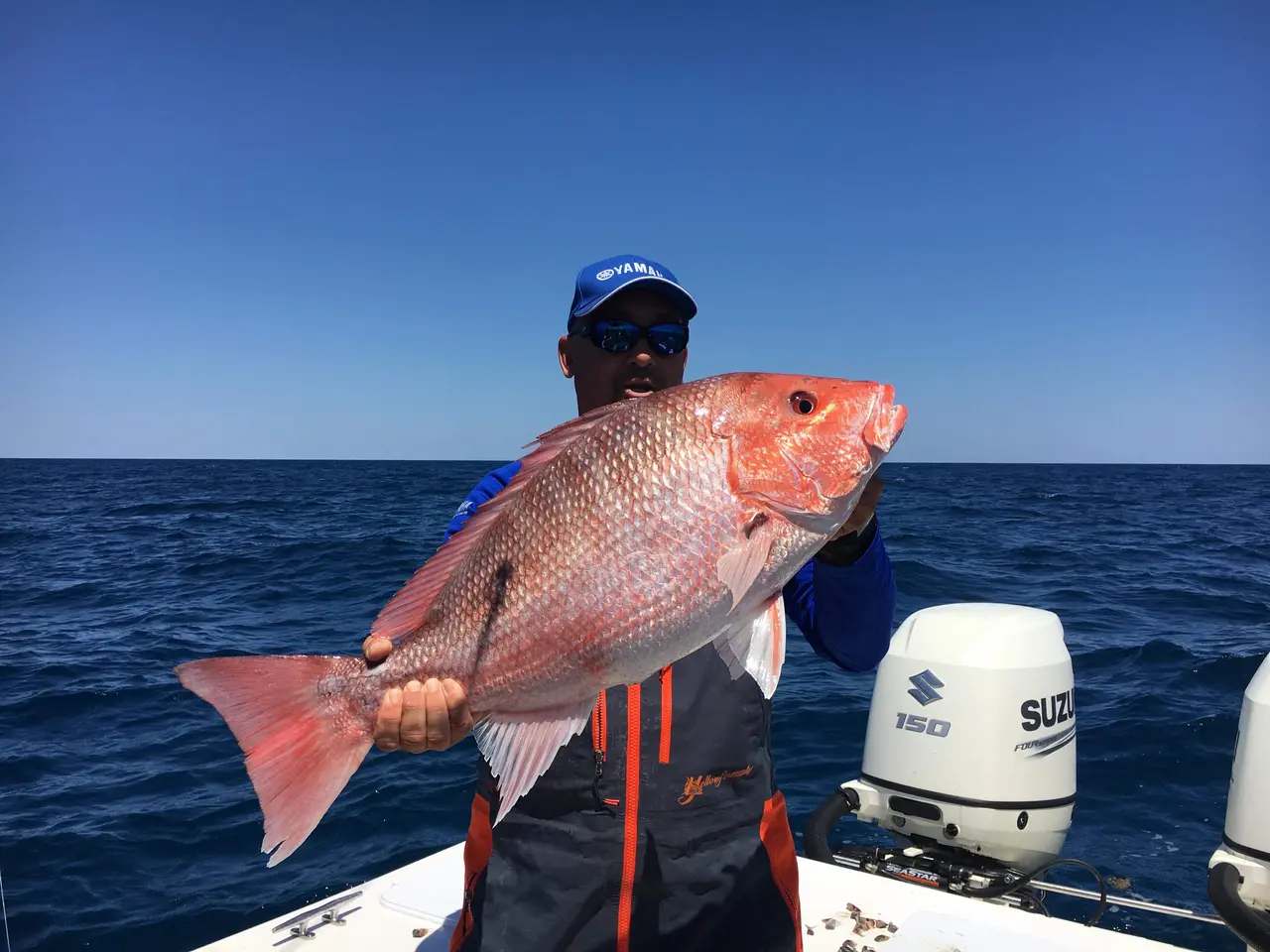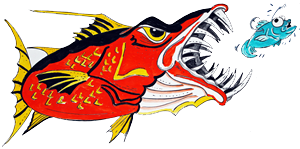Introduction to Deep-Sea Fishing Near Myrtle Beach
Myrtle Beach isn’t just for sunbathing and seafood; it’s also a prime spot for deep-sea fishing enthusiasts. This form of fishing takes you well beyond the shallow coastal waters, venturing into the deeper parts of the ocean to catch larger, less common fish. Near Myrtle Beach, you can expect to chase after species like marlin, tuna, and even sharks. The excitement of deep-sea fishing comes from not just the catch but also the challenge. You’re battling the elements, the depth, and the sheer strength of some of the ocean’s most formidable creatures. Whether you’re an experienced angler or a curious beginner, understanding the basics of this sport is essential for a successful and enjoyable experience. Remember, deep-sea fishing near Myrtle Beach isn’t just about luck; it’s about skill, patience, and the right technique.

Essential equipment for deep-sea fishing techniques
To master deep-sea fishing near Myrtle Beach, the right equipment is not just useful, it’s crucial. Start with a sturdy fishing rod and a durable reel, designed to withstand the strong ocean currents and the massive fights that big fish like marlin and tuna will put up. You’ll need different types of bait and lures, tailored to the specific species you’re aiming to catch. Deep-sea fish aren’t fooled easily, so the more realistic your bait, the better. Don’t forget a heavy-duty fishing line, strong enough to not snap under the immense pressure these deep-sea creatures can exert. A variety of hooks, some weights, and a good GPS device to help you locate the best fishing spots are essential too. Lastly, safety gear should never be overlooked. A life jacket, first-aid kit, and even sunscreen are must-haves. With this equipment, you’re all set to tackle the ocean and reel in the big ones.
Understanding the best times for deep-sea fishing
Timing is everything in deep-sea fishing, especially near Myrtle Beach. If you’re aiming to reel in the big ones, knowing when to head out is key. First off, early morning hours are golden. This is when fish are most active, making it your best shot at a great catch. Think about setting sail just before dawn. Now, let’s talk seasons. Summer months, from June through August, are peak times for a variety of species. You’ll find the ocean bustling with activity. However, don’t write off the cooler months. Fall offers some unique opportunities for specific types of fish, too. Also, keep an eye on the tide. High tide can be a particularly productive time to fish since it often brings the big fish closer to shore and in reach. Remember, while timing isn’t the only factor in a successful deep-sea fishing trip near Myrtle Beach, it’s a major one. Plan accordingly, and you might just snag the catch of a lifetime.
Types of fishing techniques for big catches
When you’re aiming to land the big ones off Myrtle Beach, understanding the various fishing techniques is key. Trolling is a go-to method. It involves pulling a line with a baited hook behind a moving boat, tempting fish like marlin and tuna to bite. Bottom fishing is another popular approach, where you drop your line to the seafloor, targeting species that dwell near the bottom like grouper and snapper. For those seeking a thrill, there’s offshore fishing. This takes you further into the ocean, where you can chase large fish using heavier gear. Each technique has its place depending on what you’re after. So, gear up, choose your method, and get ready to fight the big ones. Remember, knowledge and the right technique are your best bait.
Bait and lure selection for deep-sea fishing
Choosing the right bait and lure is crucial in deep-sea fishing, especially near Myrtle Beach where the big fish play hard to get. Let’s talk simple. For starters, live bait like squids or minnows attracts a wide range of fish. They smell real, move real, and yes, fish find them irresistible. If live bait is your game, remember fresh is best. Now, for lures, it’s a whole different ball game. Bright and shiny lures are your go-to for deep waters. They catch the light, mimicking small fish and grabbing attention. Size matters too. Match the lure size with the fish you’re targeting. Going after tuna? Go big on lures. Chasing mackerel? Smaller, more agile lures work wonders. Remember, deep-sea fishing is not just about tossing your line and hoping for the best. It’s about thinking like a fish. Get into their heads. Use what they love. And that, my friend, is how you reel in the big ones near Myrtle Beach.
Techniques to locate the biggest fish in deep waters
Finding the biggest fish in the deep waters near Myrtle Beach is all about knowing where to look and how to lure them in. Start by scouting areas where big fish are known to hang out. Look for underwater structures like reefs, shipwrecks, or drop-offs. These spots are hotspots for fish as they offer shelter and plenty of food. Next, pay attention to the water condition. Big fish often prefer areas with strong currents or temperature changes, as these environments bring smaller fish they prey on.
Once you’ve pinpointed potential hotspots, it’s time to choose the right bait. Live bait is often your best bet for attracting the attention of bigger fish. It simulates their natural food, making it hard for them to resist. However, don’t shy away from experimenting with different types of lures as some days, they might just do the trick.
Finally, timing is crucial. Early morning or late afternoon are prime times for big fish to feed. So, plan your deep-sea fishing trip around these times for a better chance at reeling in the giants of the deep.
Remember, patience and persistence are key. Big fish are not caught every day but follow these tips, and you’ll significantly increase your chances. Happy fishing!
How to effectively use trolling as a fishing technique
Trolling is a game changer when you’re aiming to catch big fish off Myrtle Beach. Imagine you’re in a boat, moving slowly through the water. You drop your line in with a baited hook and let your boat do the work, pulling the bait through the water. It’s like you’re teasing the fish, making your bait look like a delicious snack on the move. The key here is the slow, steady movement. It makes your bait look alive, irresistible to big fish looking for a meal.
But don’t just drop your line and hope for the best. You need to think about depth. Some fish like it closer to the surface; others hang out deeper. Match your bait and depth to the type of fish you’re after. Use a weighted line for deeper waters or keep it lighter for surface-level action.
And here’s another tip: vary your speed. A little faster, then a little slower. This change in pace can make your bait seem even more lifelike. Remember, the goal is to mimic a real fish as closely as possible.
Don’t forget, the type of bait matters too. Some days, live bait is king. Other times, artificial lures are what the fish are biting. Experiment to see what works best in the waters off Myrtle Beach.
So, trolling? It’s not just dragging your bait through the water. It’s about strategy, knowing your target, and making your bait the most tempting thing in the ocean. Get it right, and you’ll be reeling in the big ones in no time.
Bottom fishing: Another technique for impressive catches
Bottom fishing is a solid choice when you’re aiming for the big ones near Myrtle Beach. This technique is about patience and strategy. Here’s how it works: You drop your line deep until it hits the ocean floor. Then, you wait. The waiting game is key because you’re targeting fish that live or feed near the bottom. We’re talking about heavy hitters like snappers, groupers, and amberjacks. To get started, you’ll need heavier tackle because you’re dealing with deeper waters and potentially bigger fish. Choose a strong, heavy line, a weighty sinker to get your bait down there, and a durable hook. Bait choice matters too. Live or cut bait, such as squid or small fish, are top picks to attract these bottom dwellers. Remember, it’s not just about dropping your line and hoping for the best. You need to understand the bottom’s terrain—where the rocks, reefs, or wrecks are. That’s where these fish like to hang out. Bottom fishing near Myrtle Beach can be rewarding, especially when you feel that strong pull on your line. It’s a clear sign you’ve hooked something impressive. So, gear up with the right tackle, choose your bait wisely, and get ready for the thrill of reeling in one of the ocean’s heavyweights.
Safety tips while practicing deep-sea fishing techniques
When you’re out on the vast ocean near Myrtle Beach trying your hand at deep-sea fishing, staying safe is just as important as the thrill of the catch. Listen up; the sea doesn’t care how experienced you are. First off, always wear a life jacket. It’s simple, it keeps you afloat if you unexpectedly find yourself in the water. Second, keep an eye on the weather. The ocean’s mood can flip in a heartbeat, and you don’t want to be caught in a storm. Make sure your radio is working; checking the forecast could be a lifesaver. Tip number three, know your gear inside out. Handling fishing equipment incorrectly can lead to injuries, or worse, losing the catch of the day. Fourth, stay hydrated and slap on sunscreen. The sun out there is merciless, and dehydration or sunburn can turn an epic adventure into misery. Finally, always fish with a buddy. If something goes sideways, having someone to help can make all the difference. Remember, respect the ocean, and it’ll respect you back. Let’s keep it safe and reel in those big ones.
Summary of how to master fishing techniques near Myrtle Beach
Fishing near Myrtle Beach is all about strategy. Whether you’re a novice or have spent a lifetime by the sea, mastering local techniques will boost your catch rate. Start with the basics: knowing the water. The Atlantic waters here are rich with a variety of fish, each requiring a different approach. To reel in the big ones like marlin, tuna, or mahi mahi, focus on trolling. This involves dragging bait or lures behind a moving boat, mimicking the motion of real fish. For bottom dwellers like groupers or snappers, try bottom fishing. Drop your line to the ocean’s floor with a heavy weight and wait for the unsuspecting fish to bite. Bottom line, the right gear, bait, and a touch of patience go a long way. Keep it simple. Practice makes perfect, and soon, you’ll be pulling in catches worthy of any seasoned fisherman’s tales. Stay persistent, stay patient, and most importantly, have fun out there.

Leave a Reply